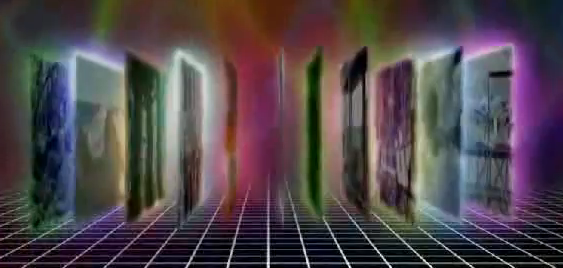- 1,827
- 495
Iirc, the whole 11D thing from Braneworld was agreed to be disproved off site. Also, I think it’s best to leave @Jamesthetaker with all the talking as he’s the one who first introduced Higher D KR
Follow along with the video below to see how to install our site as a web app on your home screen.
Note: This feature may not be available in some browsers.
Unfortunately, Braneworld's 11 dimensions aren't extra dimensions; they are layered but not in a higher order.here something if this means anything
Engine Sentai Go-Onger
Braneworlds
"This world is comprised of 11 seperate dimensions, layered upon each other like the layers of a cake. You humans live in this dimension, Human World. And the Engines come from Machine World. There's others, too, like Samurai World and Christmas World."―BOMPER explains the Braneworlds to the Gokaigers
In Engine Sentai Go-Onger, the concept of Braneworlds is used. A total of eleven known Braneworlds exist. Of them, four Braneworlds have been ruined by the Banki Clan Gaiark. badguys that traveled to the human world
bomper is the info dump
Braneworlds
In Engine Sentai Go-Onger, the concept of Braneworlds is used. A total of eleven known Braneworlds exist. Of them, four Braneworlds have been ruined by the Banki Clan Gaiark. Normally known as Earth, Human World is home to the human race, and serves as the primary dimension of the series. It was...powerrangers.fandom.com
gokaigers is like decade
this is before Kikai Sentai Zenkaiger
Man, get your trash takes out of here
Man, get your trash takes out of here
I agree with her I hope you have a nice day @ImmortalDreadWe were in a perfect state, no need to ruin it.

Take your time.Will respond to James in the weekend, I am extremely sorry for delay.
Had some emergency, so I was forced to stay at student home and have no access to my main PCWill respond to James in the weekend, I am extremely sorry for delay.
Had some emergency, so I was forced to stay at student home and have no access to my main PC
Understandable, take your time lelThe thing is my main PC has all scans, I don't like to give short responses, specially me and James are debating peacefully and respectfully.
Apologies
Take your timeThe thing is my main PC has all scans, I don't like to give short responses, specially me and James are debating peacefully and respectfully.
Apologies
Behind the world we see is the real world──
Last week I wrote that the Don Brothers tried to do some serious Avataro stuff, but were put off.
That's the world view we've introduced instead.
Even without going to another world, this world itself is actually a different world. Only those who wear sunglasses can see the real world.
Momotaro is the story of the hero who is born from a peach that flows down the Domburanko and goes to the other world called Onigashima.
What is upstream of the river?
Since a peach with a baby inside is produced, it must be another world.
There are many stories from the past about heroes who come from the other world and bring good fortune to this world ....... From the descent of the sun and Ebisu-sama to Sue-Man and Ullaman. There are countless stories from all over the world. That is how long humans have longed for the "other world" in their lives.
On the other hand
This world is really another world.
We must wake up to the truth of it.
This is not the same as the idea that "this world is really the other world" or "we should wake up to the truth of the other world.
I feel that this is a uniquely Western way of thinking.
In movies such as "Men in Black" (1997) and "Matrix" (1999), people wear sunglasses. And for some reason, everyone wears sunglasses. In Japan, too, there are sunglasses heroes from "Gekko Kakou" to "Abui Keisatsu," but wearing sunglasses does not mean that they are awakening to the world of truth.
This feeling may date back to the ancient Greeks.
The philosopher Plato had a theory called "The Idea Theory.
The world in which we live is not really real. What is real is the perfect world of ideas. Our world is but an imperfect shadow of it. Idea, in English, is an idea. It is a world of concepts that cannot be seen or touched and can only be dreamed of. The concepts we think of as virtual are real, and the world we think of as real is virtual. This sense of reality may be the reason why the two seemingly contradictory ideas of heaven (salvation in the next life) and the second coming (salvation in this life) can coexist in today's Christianity.
The virtual and the real. The idea (concept) and the id (ego). Perfect reason (the brain) and imperfect desire (the beast).
When you mess around with these things, you end up with the Don Brothers.
Authority abuse.Skill issue.